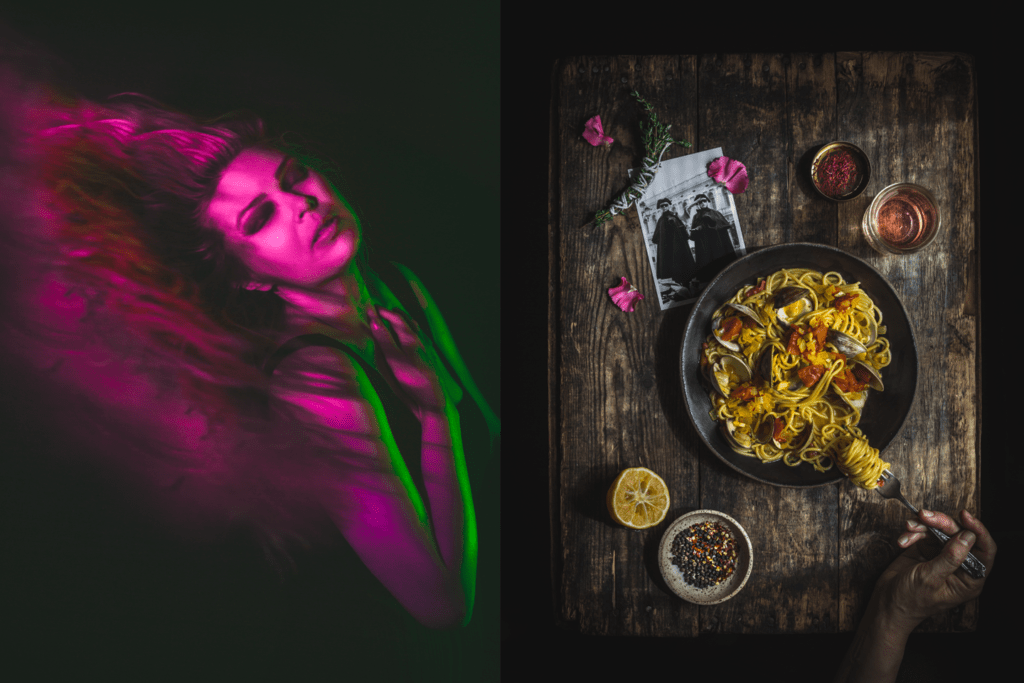
Once upon a time there was a girl who wanted to be a professional food blogger. She brought her camera and wandered through a magical forest made of purple kale and dying roses, melted candle wax and vinyl records, where it was always the golden hour. But she got lost. There were vampires in the forest, and they fed on her. She became a vampire herself. Blind with the thirst for blood, she couldn’t see anymore. She saw only likes, follows, and comments, until she disappeared.
This is the story of how I got lost on Instagram. It’s about everything that’s wrong with Instagram growth culture, and how it compromises our mental health, our personal relationships, and our art.
It’s also about the potential for music and dance to facilitate transcendence.
And it’s about my relationship to Drab Majesty’s Modern Mirror, a “tragic wave” concept album inspired by the myth of Narcissus, the story of a man so obsessed with himself, he drowns in a pool of his own reflection, re-worked for modern times, in which the reflective pool is replaced with the screens of our phones.
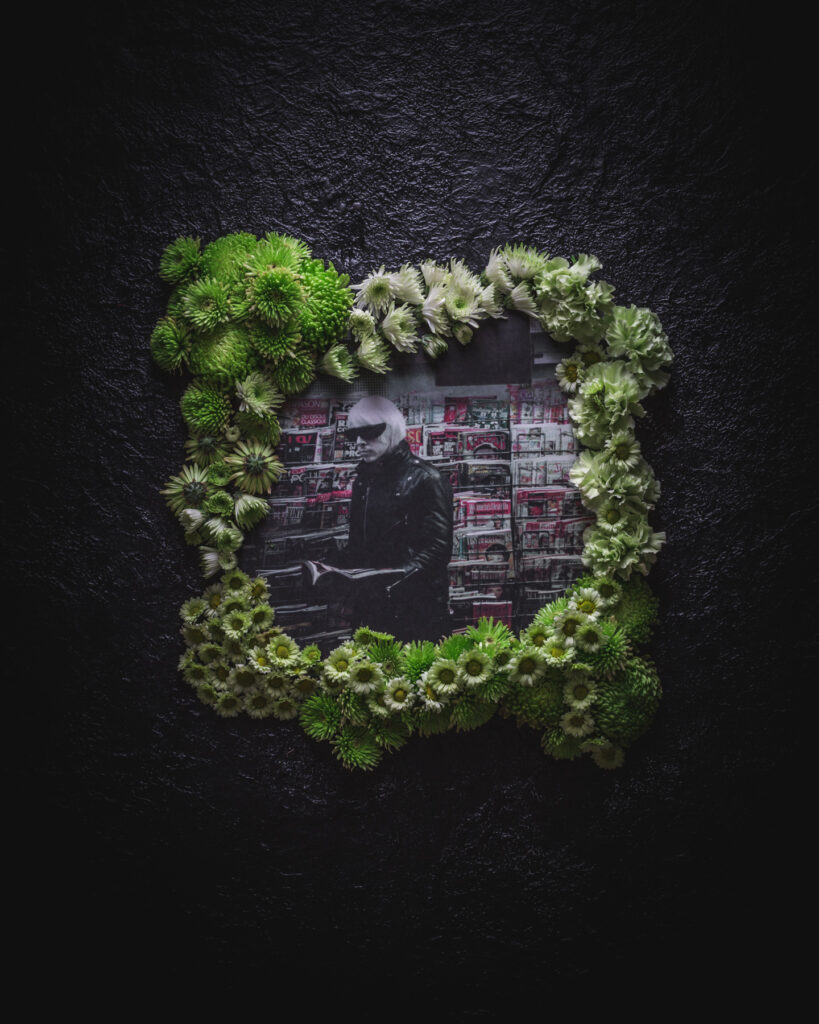
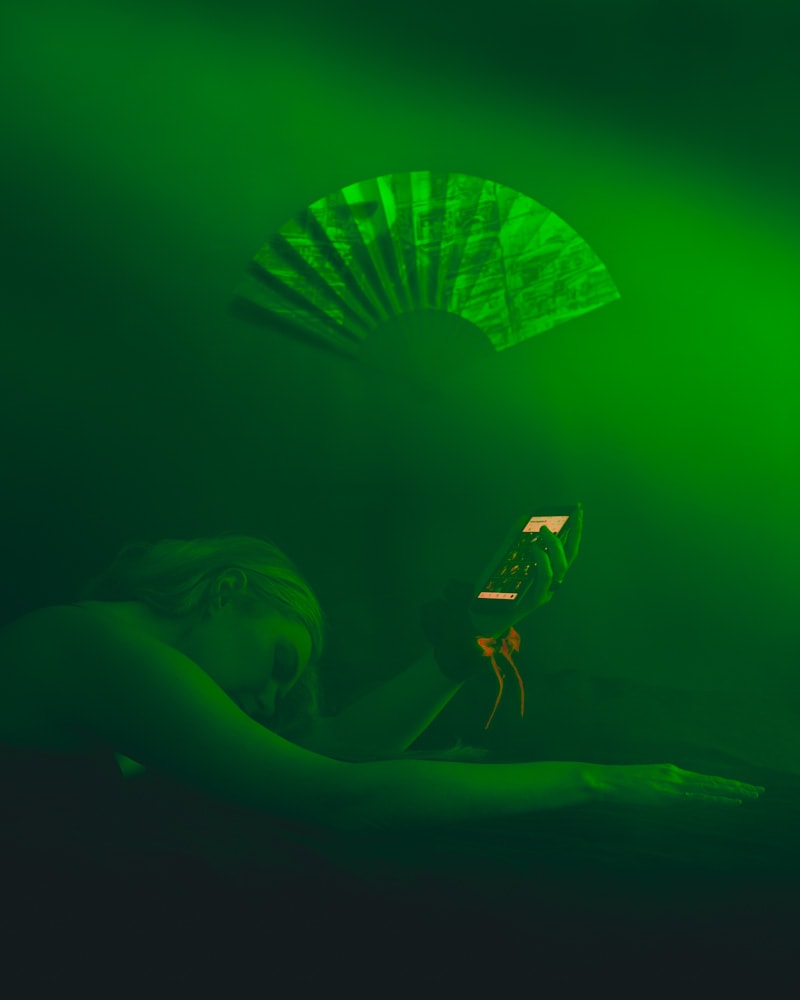
The New American Dream is The Instagram Dream, and it is The Gold Rush of our times. The digital landscape of the modern age holds the promise that we can all do what we love for a living, so long as we have enough followers on social media. Tech companies and Instagram business coaches call it “monetizing your passion.” Your obscure crafting habit is now a marketable niche, and they are poised to sell you their gold panning equipment. They will liberate you from your sad office job and teach you how to turn your pillowcases embroidered with Kate Bush lyrics into six figures a year.
As an aspiring food blogger who quit her job in the hope that she could make her passion her profession, I’ve spent a lot of time in this strange new world. In many ways, it was the happiest time of my life. Two years devoted to creating, to mornings spent writing and afternoons spent arranging living canvases of root vegetables in front of a sunny window, music in my ears, energy moving through my body, my entire being drinking up light.
But that light was frequently blocked. I was also deeply immersed in the culture of trying to grow a following on Instagram, a culture that as someone who had never used social media publicly much prior to this experience, I was naive to. My work was personal, I was vulnerable, and that artistic vulnerability was amplified by financial vulnerability, because The Loving Belly was to be the way I paid the bills and put food on the table. The need for this project to succeed was primal, and as such, the way in which my art was reflected back at me by Instagram felt vital. I became addicted to the app, addicted to approval-seeking, and addicted to looking at my gallery. It’s a place where you always want more and are never satisfied with what you already have.
Although my story is about the Instagram growth culture that surrounds food blogs and food photography, I think my observations will resonate with many and can be applied to Instagram growth culture and social media use across mediums. It’s a lesson in how to recognize Instagram’s traps, and how you can reclaim the space as an artist. They are things I wish I’d known when I started, though I probably wouldn’t have listened.
I started fantasizing about becoming a food blogger back in 2012. A desire born from having a lot of food intolerances and needing to hack conventional recipes to comply with those dietary restrictions in order to eat. There were a few healthy food bloggers who I followed via their blogs because Instagram hadn’t blown up at that point and they weren’t active there yet.
But it remained a fantasy and nothing more. Overworked, overwhelmed, and under-medicated, I avoided actualizing those dreams for years, despite my husband’s endless stream of loving encouragement, which I always greeted with fury and exasperation. How could I possibly find the time to have a food blog if it wasn’t my job, if I wasn’t being paid? I was a newsroom video editor and spent long, draining hours at the office like most Americans, and spent most weekends in bed trying to recover the strength to do it all over again. There was no time and energy left for a food blog.
Several years passed. Instagram was changing, the age of the influencer was dawning, my job was becoming more demanding, and I was becoming more depressed. At work, I would take my phone into the toilet and look at Instagram to escape my life. I gazed at images of professional food bloggers smiling back at me in their cool high-waisted jeans, holding court in their rose gold kitchens, overflowing with copper pots and speckled quail egg bowls, camera strategically placed to capture their neatly organized collection of adaptogens and artisanal pantry items, all the labels facing front, which probably cost more than my monthly rent. These women appeared to be doing this for a living. Brands sponsored their posts. They hosted creative retreats. They sold photography workshops, Lightroom presets, and Instagram coaching sessions. They whispered to me that I could have the life I always wanted, just as beautiful as theirs, if I paid them for their knowledge and did what they said to do.
I could become a professional food blogger too.
I got an unexpected bonus at work and spent it all on a camera package. I listened to podcasts by Instagram coaches and took notes. I bought some photography and food blogging courses, and I practiced my craft in secret, while I developed my skills and found my style. My employer announced that they were closing their San Francisco office and relocating to DC. If I chose not to follow them I would get a severance package. I already had money saved, and the severance package would help even more. It was the perfect opportunity.
I left that job in the fall of 2018, proudly telling everyone I worked with that I was going to be a food blogger and that I was going to ‘make it rain,’ while silently swearing to myself that I would never set foot in another office or take a job that left me chained to a desk again, as I set off to walk a rainbow path that knew no end.
I was armed with what I thought was a pure and honorable desire to make the world a better place. I wanted to share my healthy recipes for digestively challenged people. I wanted to teach people how to have boundaries at their jobs, and stop eating meals at their desks. I wanted to share my rituals for healing from overwork by taking meals in silence and embracing the nourishing benefits of music, cooking, and embodiment. I had no ethical qualms about trying to get brands to sponsor my work. I feel differently about that now…
But no brand will sponsor you if you have no followers. Having not yet launched, I had none. But I wasn’t worried about that. I had advice and course materials from the best Instagram coaches in the food blogger niche. I’d launch, use their hashtag outreach, posting tips, and engagement strategies, and the followers would just fall out of the sky.
I launched. No one came except for bots and marketing companies that were trying to get me to buy fake followers for my account. I wanted to reach real, ordinary people, but for some reason, the only people I seemed to be reaching were other aspiring food bloggers. And boy were they enthusiastic to meet me.
There were so many of them, yet they all seemed to say the same thing, over and over.
“Simply stunning!”
“Absolutely gorgeous!”
“Just divine!”
“So Pretty!”
Occasionally there would be something less generic, but still disturbingly over-enthusiastic like, “OMG peaches are the best!!! I love peaches SO MUCH!”
With the exception of the occasional comment of the “PEACHES!!!” variety, the responses never seemed to have anything to do with the caption I had written, or the content of the image I had shared. All that mattered was that they had territorially pissed on my feed, and that they had done it quickly. They commented at me in the hope that I would return the favor by commenting back at them, and the algorithmic gods would smile on us both.
Instagram coaches are breeding this culture of empty codepenancy. They all tell you to do it. “It’s authentic!” “It’s community building!” “It’s cheerleading, and creatives need that!” I’m not saying that community building is bad per se, or that I haven’t met a very small number of people I actually like through engaging in this practice. I recognize that artists are vulnerable and benefit from encouragement. But that’s not what’s really going on here. This is about looking at one another through the filter of our own wants and needs, using each other, and calling that community. It’s about feeding the algorithm for personal gain, because the one thing that all Instagram coaches tell you over and over again is that “the algorithm will always reward engagement.” The more you comment, the more likely people will comment back at you. Your post will be flagged by the algorithm as having high engagement, and be pushed into other people’s feeds, helping your account to grow.
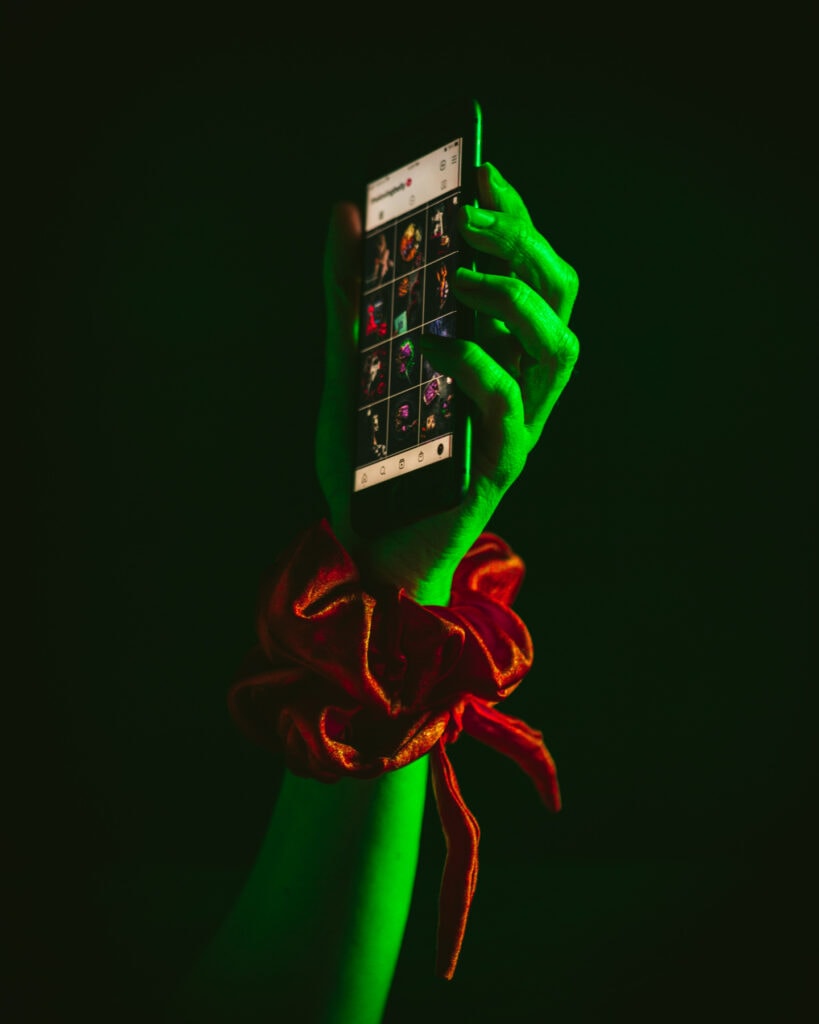
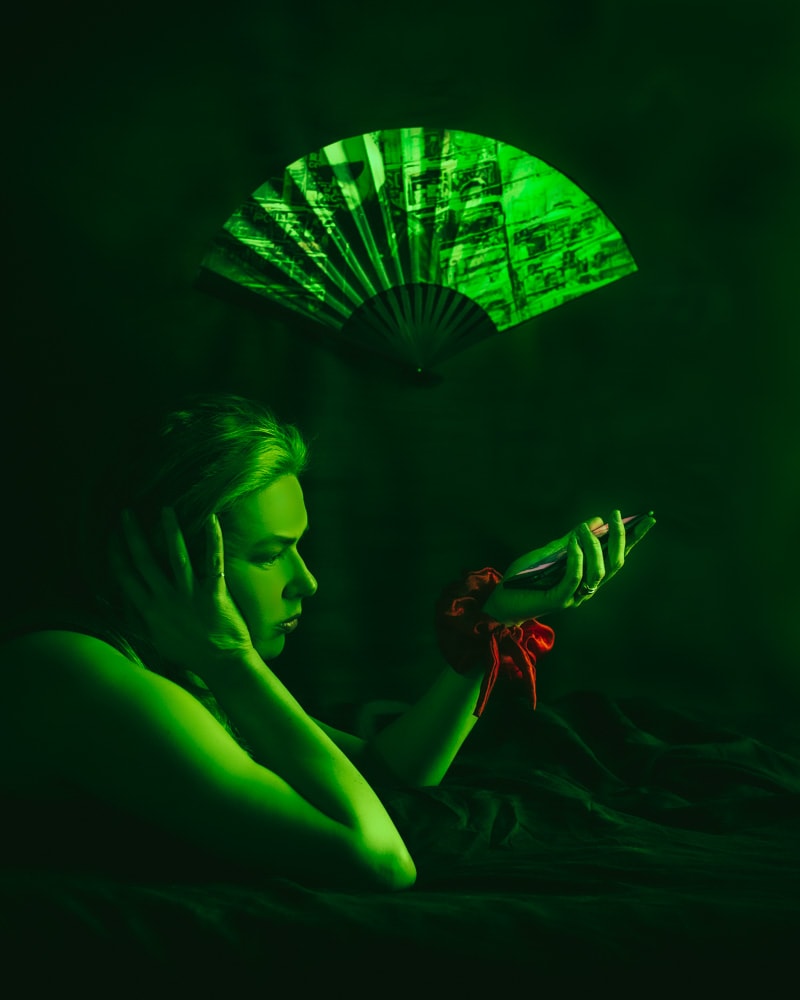
So I did what the experts said and tried to play the game. I participated in artificial relationships, engaged in hollow commenting, faked orgasms over images that meant nothing to me, used too many exclamation points, left comments for users I didn’t follow and had no intention of following, only because I hoped they would follow me. I used people to feed the algorithm the way celebrated Instagram coaches tell you to, concealed under the veil of cheerleader-y friendliness. “Be social!” they say. “Give likes away like candy!” “Fake it till you make it!” The irony is that this perpetuates a culture of quid-pro-quo inauthenticity. You respond to the same compliments from the same people, over and over, every day. The artifice is draining, the conversations are transactional, and this empty chit chat comprises hours of your workday.
Yes, I said hours. When I was still attached to the idea of trying to make this my profession, my weekly screen time reports hovered around 4 hours a day, give or take a half an hour. I set timers to try to keep it under control, but it is astounding how the time slips away without you realizing, when experts encourage you to be active 15 minutes before you post, remain active until 45 minutes after you post, and then keep checking in throughout the day, as often as you can, a few minutes here, a few minutes there, get out of your hashtag bubbles, engage with new communities, leave comments, and make sure those comments are “authentic!!!” I shudder to think how much time I spent reading long-winded, boring-as-hell captions, trying to think of some original way to respond when I could have been reading a book, meditating, or being present with my loved ones.
Instagram coaches recommend that you post every day, which can be very challenging, depending on the kind of content you create. My photography is generally time consuming and involves staging elaborate scenes that require moving furniture and setting up lighting equipment. There is also time spent on shopping for ingredients, food preparation, recipe development, image editing, writing, and marketing – it’s a lot to pull off when 3-4 hours of your day are already being spent on Instagram. There was no time for innovation and experimentation, for studying new techniques, for evolving as an artist. I just did the same formulaic thing over and over to keep from falling off the conveyor belt.
I was seeding a destructive addiction to the app, and I was forging those neural pathways hundreds of times a day, over and over again, over a long period of time. Every swipe of the finger, every comment I left, every post I liked, every image I shared, was infused with an unconscious and desperate mantra of “I am not enough, please notice me, please notice me, please, God, notice me.” I’d post, and then I’d check in incessantly. Do I have any new likes? Any new comments? How about now? How about now? How about now?
I kept doing the same thing over and over again, and I kept following the advice of the Instagram coaches. They told me to “follow people strategically”, which meant very little that I saw in my feed sparked actual joy. I looked for larger accounts that I could vampirically latch on to milk for followers, showing up every day like a fly to leave comments on their latest posts, and they would reply back, because they needed me also. I fed on their popularity, they fed on my engagement, we fed on each other, we all needed to feed the algorithm, there was blood everywhere.
I hardly looked at the Instagram accounts I truly loved anymore, the ones I went to for artistic inspiration in the years before I became a food blogger, because I was too busy fiending around like a meth-head goblin, foaming at the mouth, constantly refreshing my feed, grasping for likes, grasping for comments, grasping for followers, full of want, and simultaneously, full of doubt. Maybe my aesthetic concept is stupid. Maybe what I’m trying to do is stupid. Maybe I’m stupid, because I shared something personal and no one acknowledged it. Maybe I shouldn’t have shared at all. I hate myself.
I was 39 years old, and I was in the 7th grade again. I was on a diet of social media junk food, on a school field trip to the funhouse carnival, trapped in my Instagram grid and its endless collection of tiny mirrors, all held in the palm of my hand. And nothing was being reflected back at me in the way I’d hoped. Sitting at the edge of my bed, I felt my face melting, body folding concave, everything fusing down a long vortex into the screen of my phone, until they became one. Eventually I’d emerge from this disembodied state, looking for comfort. I’d launch Planoly, the Instagram grid planning app, and endlessly swipe, drag, and rearrange the order of my future posts until they looked perfect, briefly pacified by the noxious high of my curated reflection.
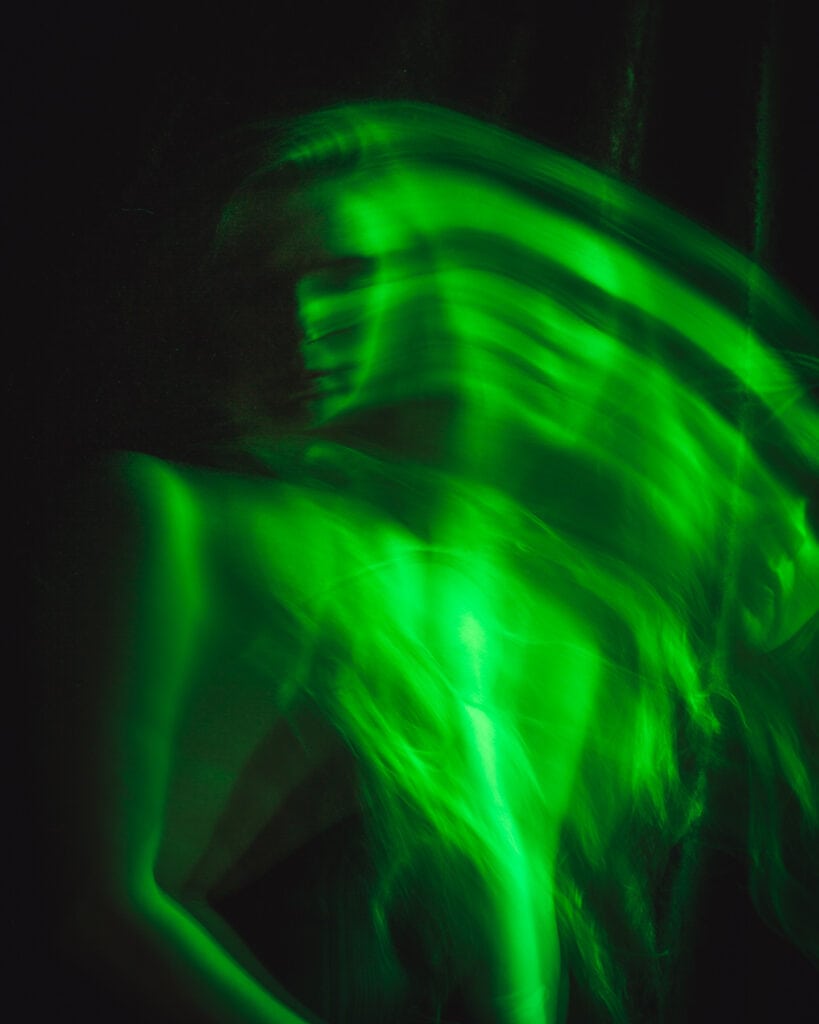
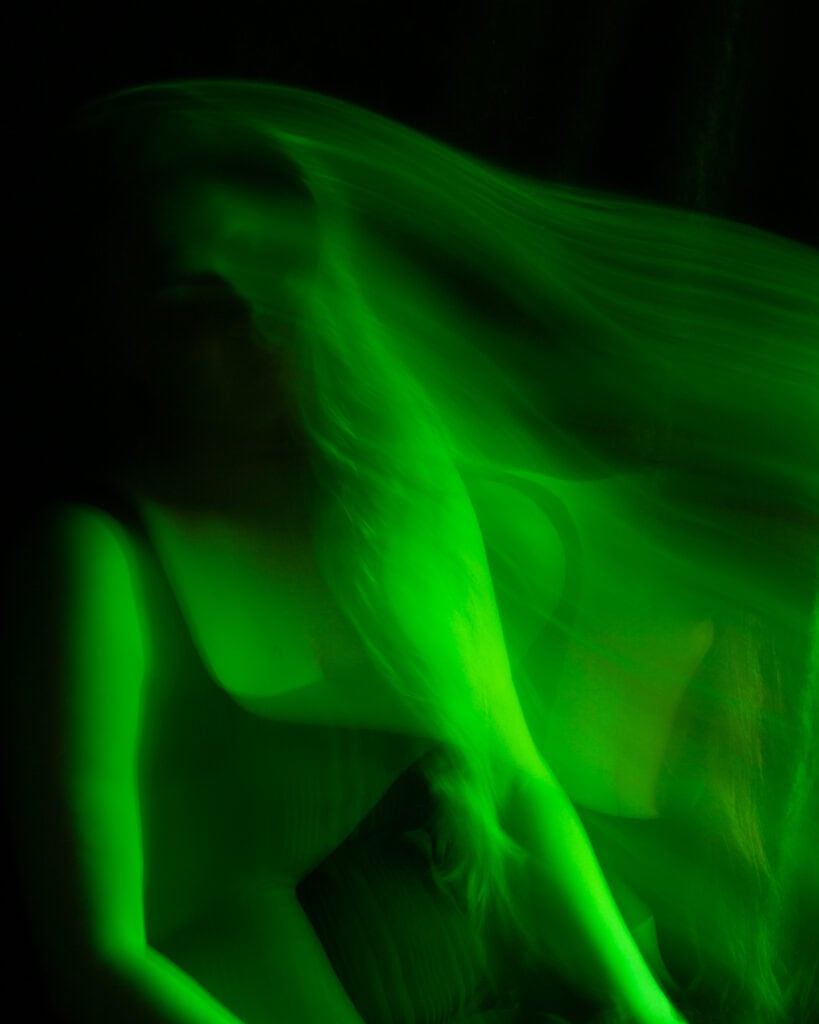
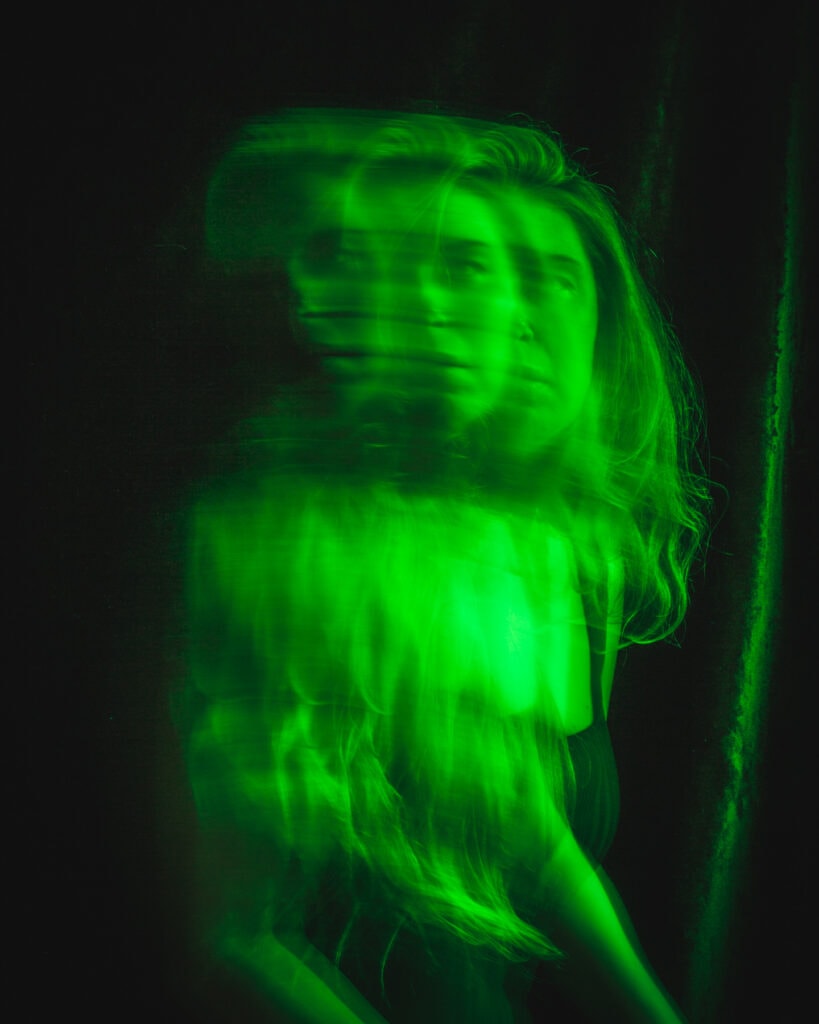
I started meeting other struggling food bloggers. I came to them for advice, hoping they would tell me that unicorns were real, that it was possible to earn a living as a food blogger. I assumed these women were doing it professionally because they had followers in excess of 10k, and were occasionally getting sponsored posts. I asked them if blogging and food photography were the way they earned a living and they always laughed. They all had day jobs and were generally unpaid for the “sponsored” posts, getting compensated for what I knew were hours and sometimes days of work with nothing more than a free knife, perhaps a few bags of oats, and maybe an extra $30 if they were lucky. The mythology of the professional food blogger “monetizing their passion” through Instagram was beginning to dissolve for me.
I began to see it as a culture of charades, a trick of the light creating the illusion of friendship that is ultimately based on trying to manipulate us into buying something we don’t need. The deception lies in making us feel like we’re their friends while simultaneously making us wish we had their life instead of our own. Mesmerized by the smiling influencer as she twirls through the frame, watering her plants and asking us to sign up for her mailing list, we do, and as if by magic, a welcome email immediately appears in our inbox with our names in the subject line: “Courtney, I’m so glad you’re here!!!” The ruse of intimacy created by saying our names is nothing more than a trick of automation. We open the email and are invited to purchase tickets to her retreat in Bali, buy her e-courses, browse her affiliate store. Capitalism feels so personal in this space, we don’t even see it.
I started to think that being a professional food blogger was no longer a respectable thing to do. The idea of taking the small, sweet, heartfelt audience I had managed to grow, and spamming them with commercials for quinoa and $500 blenders felt vulgar to me.
I stopped posting for a while. During this period, I met other artists who sympathized with my feelings about Instagram and gave me advice like “Don’t do it for anyone but yourself.” I met a multidisciplinary artist who told me that she doesn’t want her art to be the way she earns a living because it makes her feel spiritually desperate. I met a painter who told me that he only paints on the days that he feels like painting – quite a revelation to someone who’d been brainwashed into thinking she had to post every day.
They all had day jobs.
But I couldn’t let go. I’d built the last year and a half of my life around The Loving Belly, and despite the ways in which Instagram had sickened my mind, it was still the happiest I’d ever been, because I was actualizing my creative visions constantly. I clung to the dream, trying to find ways in which I could continue to express myself in a similar capacity. If I couldn’t be a food blogger, perhaps I could be a food photographer? A portrait photographer? A food stylist? A food writer?
I was not successful in breaking into the food photography scene, though I did get a few portrait gigs here and there. I found the food styling scene in the San Francisco Bay Area to be fiercely guarded, unwelcoming, and impenetrable. And food journalism did not seem to pay enough to live: the flat fees offered for an article worked out to less than minimum wage when you calculated the amount of hours that went into it.
Desperate for ideas, every time I met an artist I asked them what they did for a living. Bartender. Dog Walker. House Painter. Barista. The jobs didn’t pay great but in conjunction with what little they made from selling their art it worked out. Could I do that?
I flailed around in this way for months, unable to address the elephant in the room, living on borrowed time, running my finances into the ground, while I defiantly continued to create new work for The Loving Belly. I started going goth dancing at Death Guild at the DNA Lounge on Monday nights. It was a way to further avoid responsibility while clinging to the freedom I still had before I inevitably lost it to a desk job, as I ran from the total disintegration of my hopes and dreams.
And that was how I discovered Drab Majesty, and Modern Mirror.

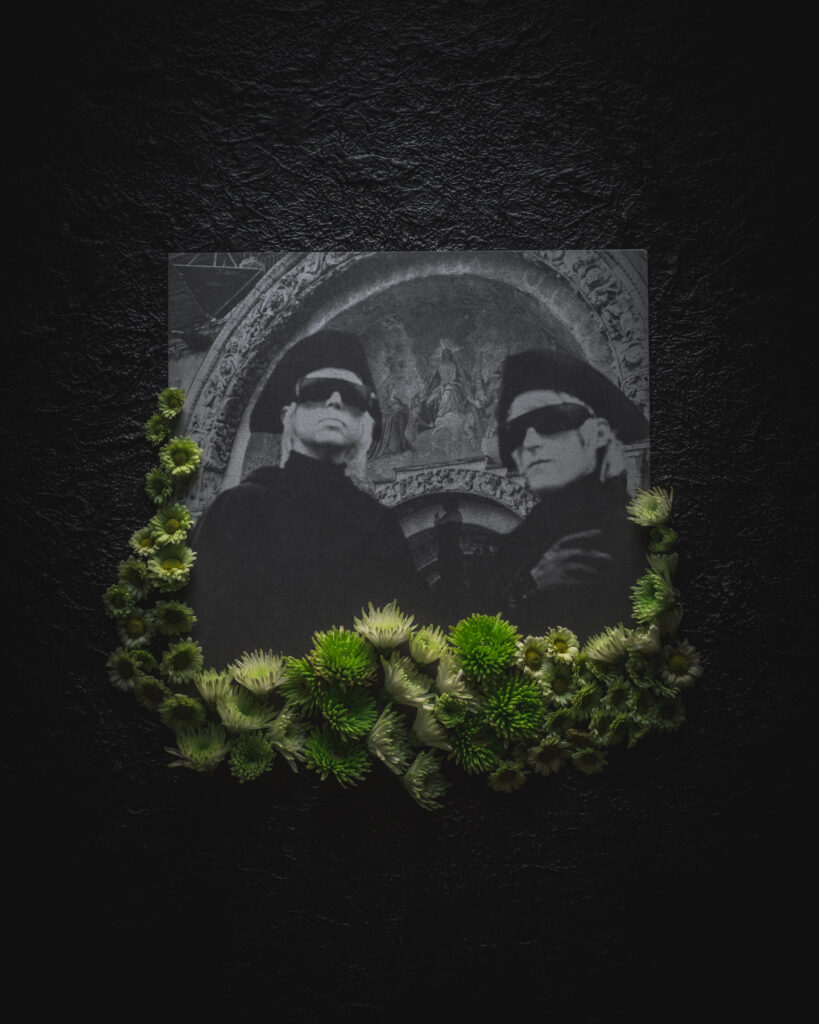
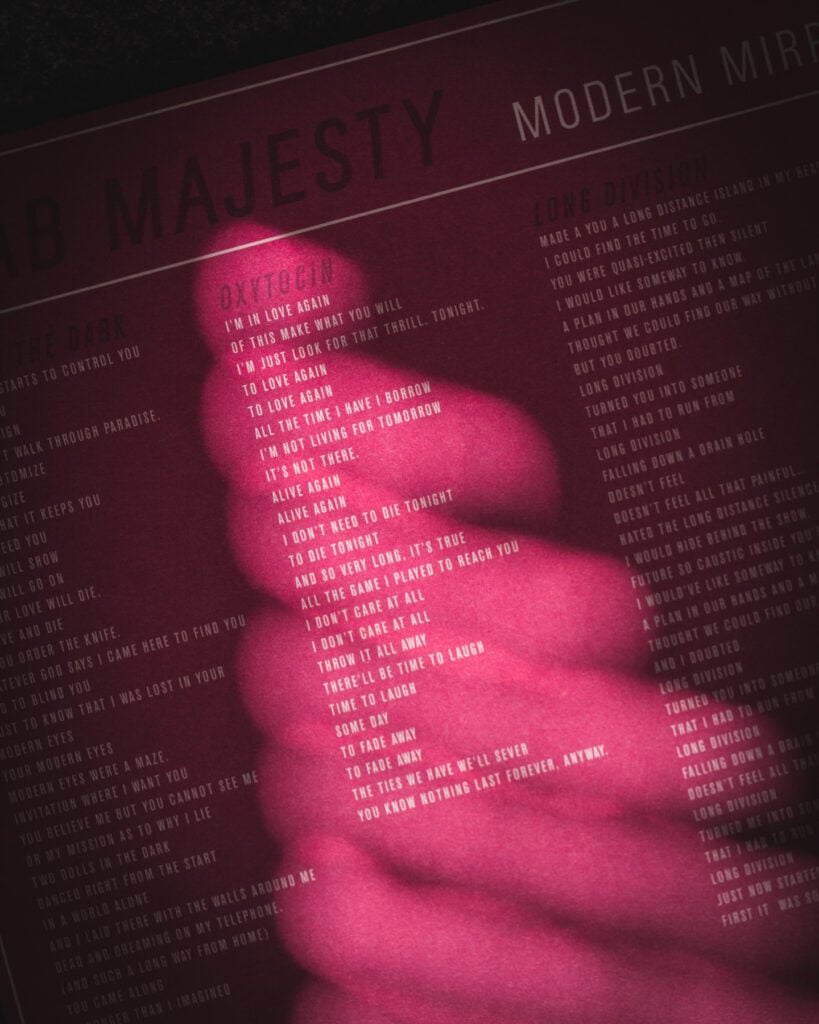
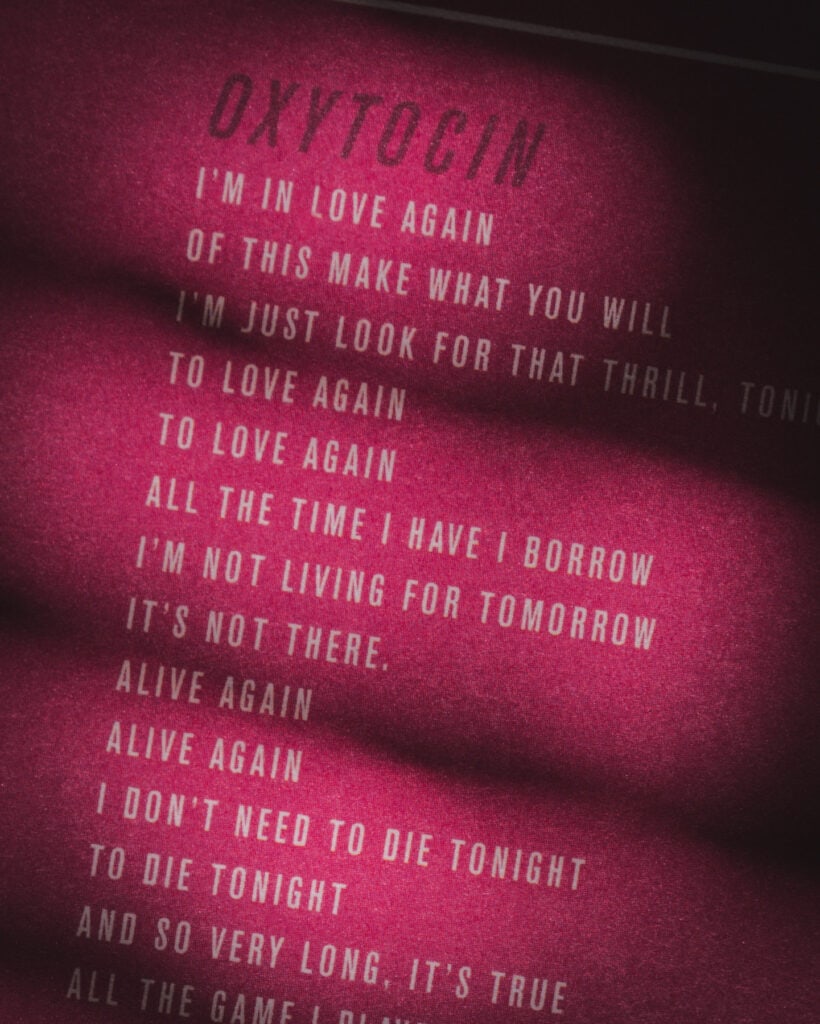
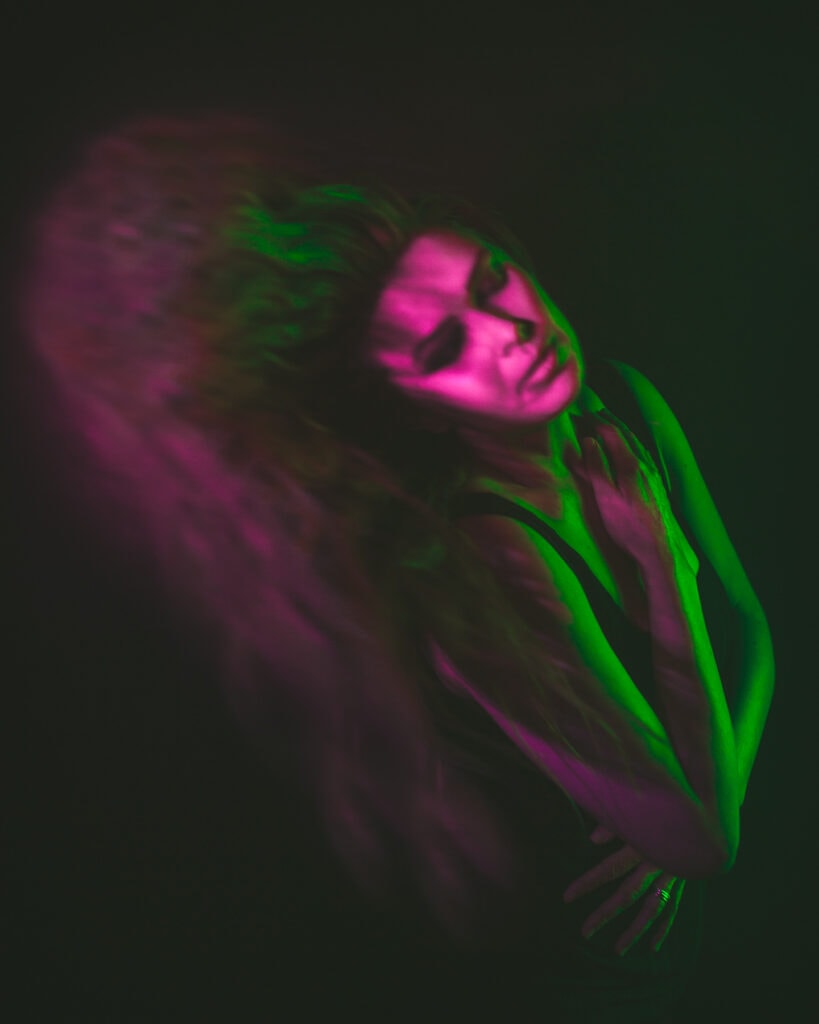
On February 18, 2020, circa 12:45am, lost, hopeless, and wandering between rooms at Death Guild, a dancefloor Cupid was in the rafters, and he shot at me with an arrow dipped in Drab Majesty.
I had just finished catching up with an acquaintance of mine at the bar upstairs. I knew him as the goth checker at my neighborhood Whole Foods. He revealed during our conversation that he was also an artist. I was delighted – he appeared to be living proof that it was possible to be an artist, have a job with no responsibility, live in San Francisco, and still have money left to go out. Maybe I could get a job there. Restless and fidgety, I told him I wanted to hear what they were playing downstairs, and left.
I wandered alone into the main room, where unbeknownst to me, the opening bars to Drab Majesty’s “Oxytocin,” were falling. I’d never heard the song before, and I didn’t know it was Drab Majesty.
But it couldn’t have come at a better time.
I was immediately drawn to it: short rhythmic phrases of melancholy guitar countered by a bouncy synth bass line and a gated reverb snare, it was the perfect mixture of happy and sad. I closed my eyes and began to glide from side to side, grateful for the opportunity to escape from the world, rocked in the embrace of the song.
I wasn’t paying close attention to the lyrics, but they were lyrics I was meant to hear on this night, and as I swayed in the darkness, they floated into my consciousness:
All the time I have I borrow
I’m not living for tomorrow
It’s not there.
I felt those words like a sigh, like the blissy, instant high that follows downing a glass of wine in one drag. It was a relief to hear what I’d been feeling over the last year, elegantly summarized in three concise lines.
I started to be drawn in by the song more deeply, losing myself in the instrumental progression that followed: shimmering finger-picked guitar full of longing and anxious frenzy, it fell around me in icy cascades. The club wasn’t crowded. I spun into the center of the dancefloor to claim the sonic sweet spot, and resumed gliding from side to side, enjoying the sensation of my hair dragging in long flags with every sweeping movement, as the song continued its invocation.
The instrumental passage withdrew, the sparse, melancholy themes of the song’s genesis returned, and there was singing again. Lost in the pleasure of movement, sound, and sensation, I continued to make no conscious effort to pay attention to the lyrics. But the song was in charge now, a divine force on this night, and they were words it wanted me to hear:
Alive again
Alive again
I don’t need to die tonight
To die tonight
I opened my eyes.
“I need to die” is one of those compulsive thoughts I generally don’t mean but nonetheless have countless times a day, occurring with even greater frequency during this heavily Instagramafied period of my life. Yet somehow, even on first listen, I knew it was a lyric uttered in ironic parody.
And I took great pleasure in it.
Deb Demure and Mona D. were taking my darkest inner monologues, setting them to pop music, and making them feel light and laughable.
I threw my head back and began to dance faster and with more abandon. Closing my eyes again, I felt the joy and release of throwing myself into each movement, shaking stagnation from my body. My love for this song was growing feral, and I wrapped my arms around myself, hugging the song close, feeling every note, every melody, every word:
And so very long, it’s true
All the games I played to reach you
I don’t care at all
I don’t care at all
The music paused.
And then struck down hard:
Throw it all away
Away hay hay
There’ll be time to laugh
Time to laugh
Some day…
There was a dazzling cloudburst of sound. The fingerpicked cascades of shimmering guitar were back, their anxious frenzy somehow intensified. The synth bass lines felt percussive, drove harder, louder. I opened up my arms and let it all wash over me. I wasn’t driving my body anymore, the music was, and yet even in this state of surrender, I was still conscious that these lyrics seemed to be delivered in an affectionate parody of goth tropes. The dramatic pause between ‘time to laugh’ and ‘someday.’ The way ‘someday’ is uttered wistfully, and then hopelessly trails off. The mournful, howling reprise of ‘away,’ making it a four syllable word. The sharp enunciation of ‘time’ that hissed, deliciously, like zippers.
It was perfect.
What the fuck was I listening to?
I continued to dance, euphoric, but suddenly and simultaneously, very anxious. I needed to pull out my phone and Shazam this song before I lost it forever.
But not yet.
I couldn’t bear to pull myself away for that long.
The cloudburst withdrew, and the soundstage narrowed again. The short rhythmic phrases of the song’s origin returned, clean and pure, we swang together in time, the repetition drawing me into a state of trance:
To fade away, to fade away
The ties we have we’ll sever
You know nothing lasts forever, anyway
Way-ay-ay-ay
And then there was an apocalyptic flood of sound.
The song was climaxing. I felt it in my face. I felt it behind my eyes. In my stomach. Like a glorious sonic assault with a French 75, all the layers of tracks were falling down on me, all at once, relentless, in 360 degrees, reflected off the floor, reflected off the walls, reverberating through my body, and shattering my ego. And the song took the magnificent terror of that brief ego death and reflected it back at me:
Ah-ah-ah-ah
Ah-ah-ah-ah
Ah-ah-ah-ah
Ah-ah-ah-ah
Ah-ah-ah-ah
I became one with that howling chant as a portal opened: the song had entered me physically and was expanding me, energetically drawing me upwards beyond the limits of my physical body. I saw colors: pinks and yellows; instruments and voices soared and I soared with them, the unyielding pulse of the climax continuing to drive through my body and facilitate this tremendous release of energy.
And then something was calling me back to earth.
Like the instinct that tells you to run from a predator when you are in danger, my mind was telling me that I needed to Shazam this song, and quickly.
Dazed, I fumbled for my phone, held it out in space, and launched Shazam, focusing on the app’s pulsating rings while I savored the last expansive washes of sound as they smeared across the room.
Drab Majesty, “Oxytocin,” the screen said.
I had been pierced, claimed by Drab Majesty, baptized in a rain of sound, by a song named after the love hormone.
I stumbled off the dancefloor in a daze, left the club, and went home.
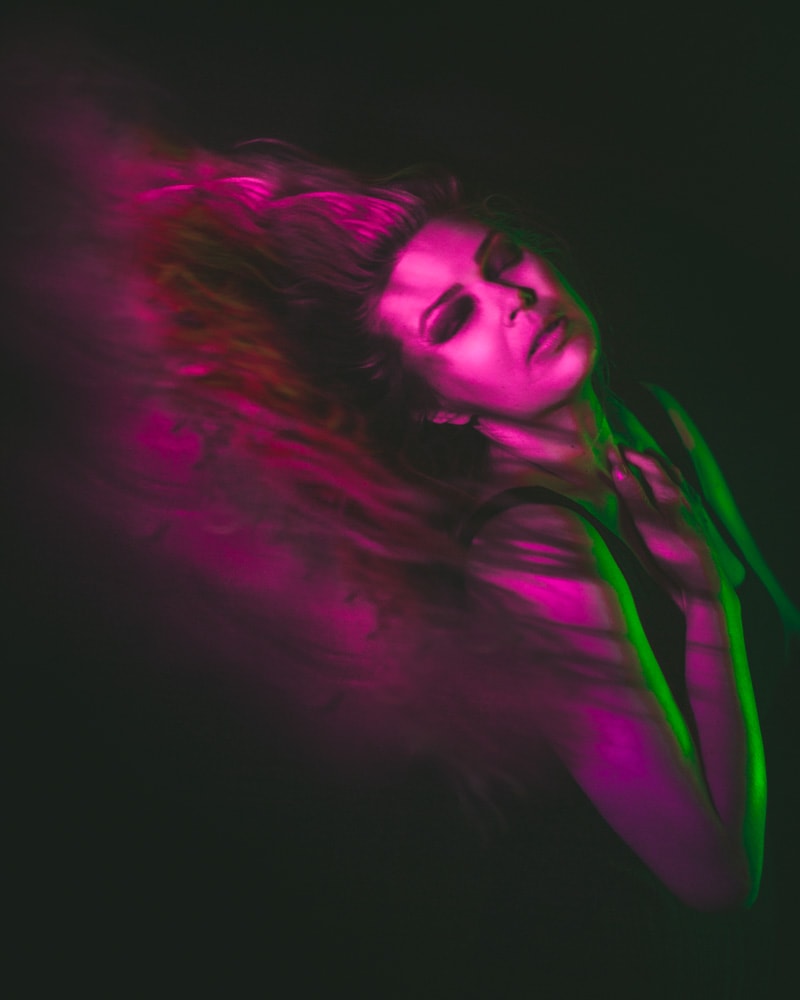
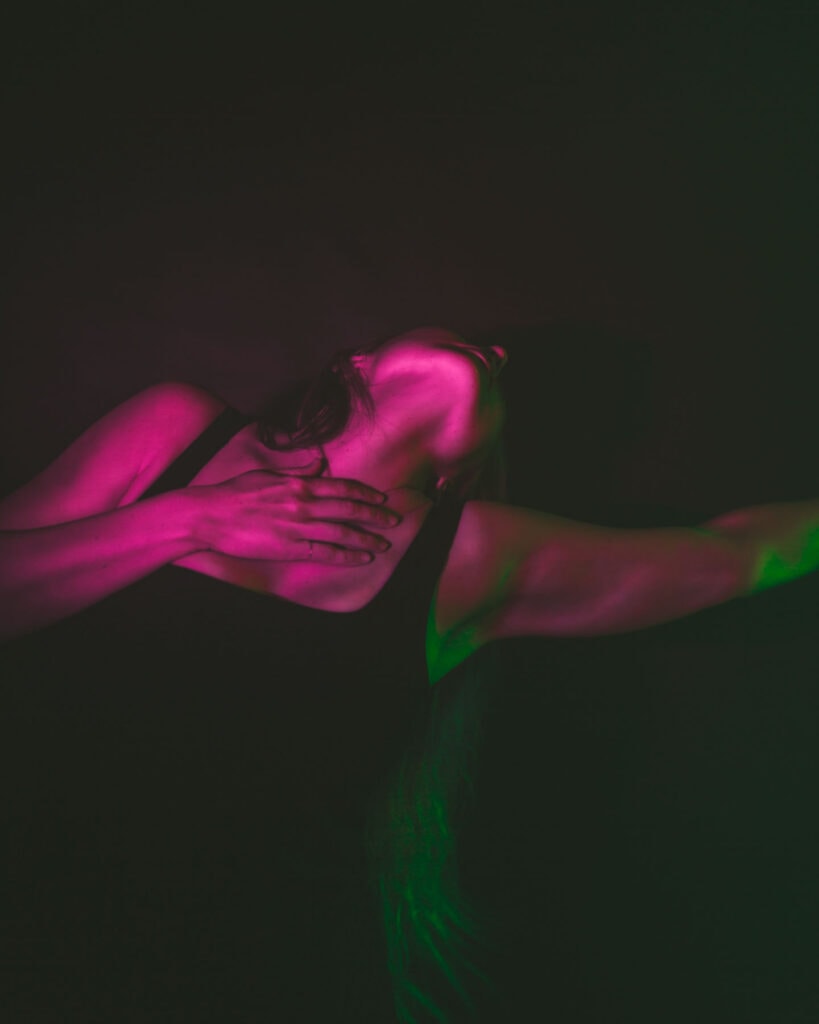
Many spiritual teachers believe that trauma can be shaken from the body through movement, and that the combination of music and dance can facilitate transcendence. Rituals involving music and dance to achieve a higher state of consciousness exist across cultures and go back thousands of years, from Sufi whirling to The Dionaysian Mysteries.
I let go of the dream that night. A spontaneous exorcism through music and dance. Moving forward, I would endeavor to continue my art practice without being attached to the outcome.
I spent much of 2020 becoming a massive Drab Majesty fan, exploring all of their musical offerings, often within the context of my kitchen, enacting a more casual and contemporary ritual of Dionaysian Mystery through a combination of music, dancing, and cooking. And Modern Mirror, a present-day re-telling of Ovid’s Narcissus set within the context of digital communication, social media, and human relationships, became a helpful and validating framework through which to view the unhealthy experience I’d had with Instagram, and a catalyst to forging a better relationship with the platform. I think the lyrics across the album are outstanding. They stand within their own context, while leaving enough room for you to make them your own. Lines like “Dead and dreaming on my telephone,” “We’re losing our honesty,” and “The wasted day is aging me,” spoke volumes to me. “Ellipsis,” named for the starting and stopping of the 3 dots that appear when someone is “writing” to you over chat, their message hasn’t appeared yet, and the emotional anxiety triggered by that, felt like a revelation.
But ecstasy, exorcism, and self-realization aside, I still needed to find a job.
Midway through 2020, an old friend from the newsroom offered me a short video editing job cutting a trailer for a documentary series she was pitching to Netflix. An opportunity to test the waters doing the same thing I did before, but under different circumstances. A short-term project, working from home, not as gun-to-the-head-time-sensitive as news, collaborating with friends.
I loved it.
I remembered what drew me to video editing in the first place: giving yourself over completely to telling someone else’s story is a great way to silence all the voices in your head. And the voices in my head had been on steroids ever since I started using Instagram to try to monetize my art practice.
So, the girl who swore she’d never edit another video became a video editor again. And so far, I am enjoying it. I spend my workdays engaging with material that expands the way I understand the world and increases my capacity to empathize with other people. It has proven to be the antidote to the narcissistic asphyxiation I had experienced with Instagram. Being busy with work helped to break my addiction to the app because I simply did not have time to use.
Right now, I’m experimenting with taking long freelance contract gigs that have an expiration date. I work for a couple of months, the gig ends, and then I take a couple of months to work on my art. The hours can be long, which shifts life out of balance, but I don’t mind because I know it will not go on indefinitely. Everything is softened by the comfort of working from home, and when I feel the ache that comes from too much sedentary time in front of the computer, I take a break and dance, often to Drab Majesty.
Time is money, and any artist who takes a day job will feel a sense of loss, because having a full time job places tremendous limits on what you can do with your time, which in turn affects how much time you have to actualize your artistic visions. While there is a sadness that comes from knowing I cannot pursue all the ideas I have for The Loving Belly, there is also an incredible sense of well-being that comes from feeling financially secure that I had underestimated after 2 years of not earning any money. It is nice to have a predictable, pleasant day job in which to shelter, to not worry about running through the forest, hunting for my food.
The Loving Belly is now a pure space for my self-expression, where I create on my schedule, with no rules. I’ve chosen to continue using Instagram because I like having an ever-evolving gallery to showcase my body of work, and because it feels special to share it with you guys. But I try to leave it as a gallery and nothing more. I post when I’ve created something that I’m proud of, that I think is worth sharing, and I try not to loiter around afterwards, waiting for comments. I publish a new essay to my blog when I feel like I have something worthwhile to say, and I let that process take as long as it needs to take.
But all that being said, I’d be lying if I tried to spin this as if all of the ways Instagram messes with my ego have been resolved. Despite these new boundaries, it’s still very hard to post, like, or comment, without looking to the app to reflect something back in return. So I strive to limit the amount of time I spend here. Having a job that is completely unrelated to The Loving Belly helps.
Think about your social feeds, how you feed on them, and how they feed on you. Think not just about how the influencer makes money, but how Instagram makes money. We feed the app with stories and images from our personal lives, and Instagram uses that information to help to sell us to people and brands we might buy from. And we harbor under the delusion that these people are our friends. Some of them are. But most of them aren’t.
In 1867’s Das Kapital, Karl Marx presented the idea of Capitalism as Vampirism. In 1897, Dracula was published, prefiguring the vampiric nature of the surveillance capitalism outlined in 2020’s The Social Dilemma. In the 2014 BBC documentary series, The Art of Gothic, journalist and host Andrew Graham-Dixon speaks on how Dracula is grounded in anxiety surrounding the new media of the 19th century: the telephone, the typewriter, the phonograph, and the Kodak camera. He argues that “this new technology can be read as another version of the vampire virus, multiplying as it feeds not on blood, but on the information confided to the keys of the typewriter, spoken into the phonograph and telephone.” He goes on to liken the jagged keys of Mina Harker’s typewriter to vampire fangs. It is surprising to me that he does not mention social media in this discussion, but I invite you to consider the idea.
And I invite you to resist.
Forge your own path. Fuck the numbers. Fuck posting every day. Fuck commenting. Fuck ass-kissing. Don’t do it because you have to. Do it because you mean it.
Be content to have a small community of like-minded people who connect to what you’re making, and be grateful for those rare occasions when someone reaches out to you to let you know that something you created meant something to them. Drab Majesty’s Deb Demure told Altvenger that the greatest reward for an artist is finishing something, bringing a thought into form. Can we let that be enough?
The reality is that you’re probably never going to grow a following large enough to monetize, and you will drive yourself insane trying to get it. You will compromise your art, your sanity, your health, and your relationships with people in the physical world, who you will neglect, trading them for time spent in a dreamhouse full of paper dolls with all the substance of a gust of wind.
Time is our most precious commodity. Think about your weekly screen time report, and how that translates into days, months, years of your life. Do you really want to give that much of your life to Instagram?
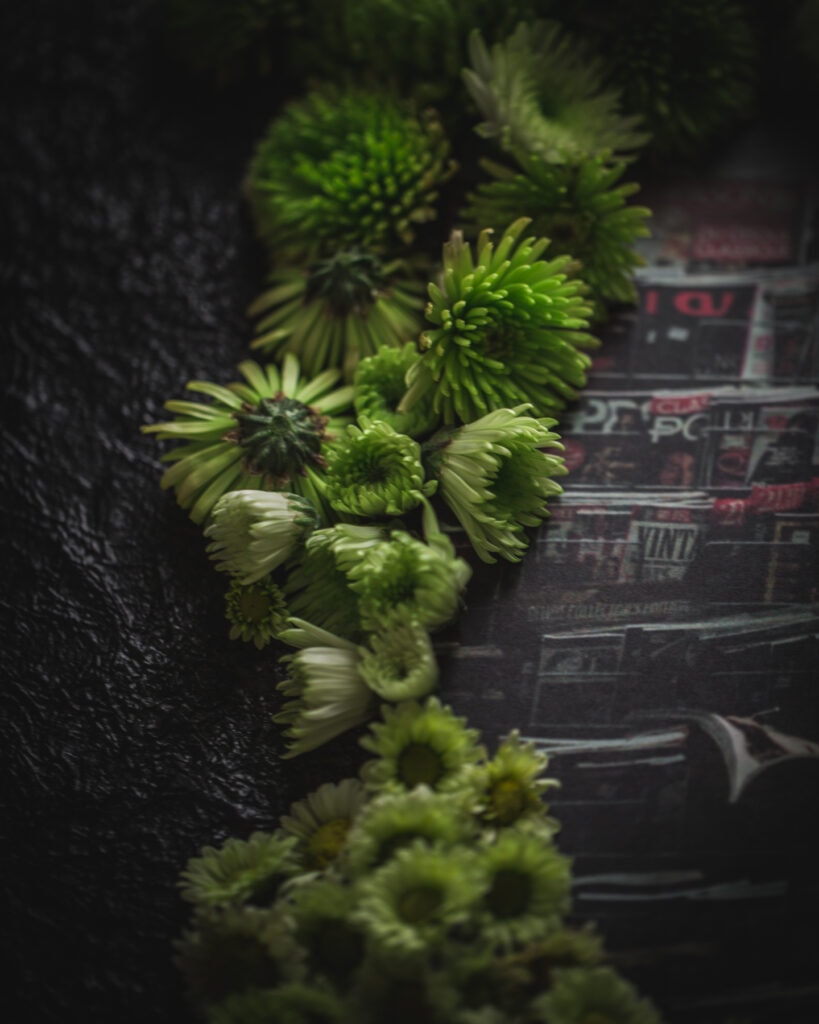
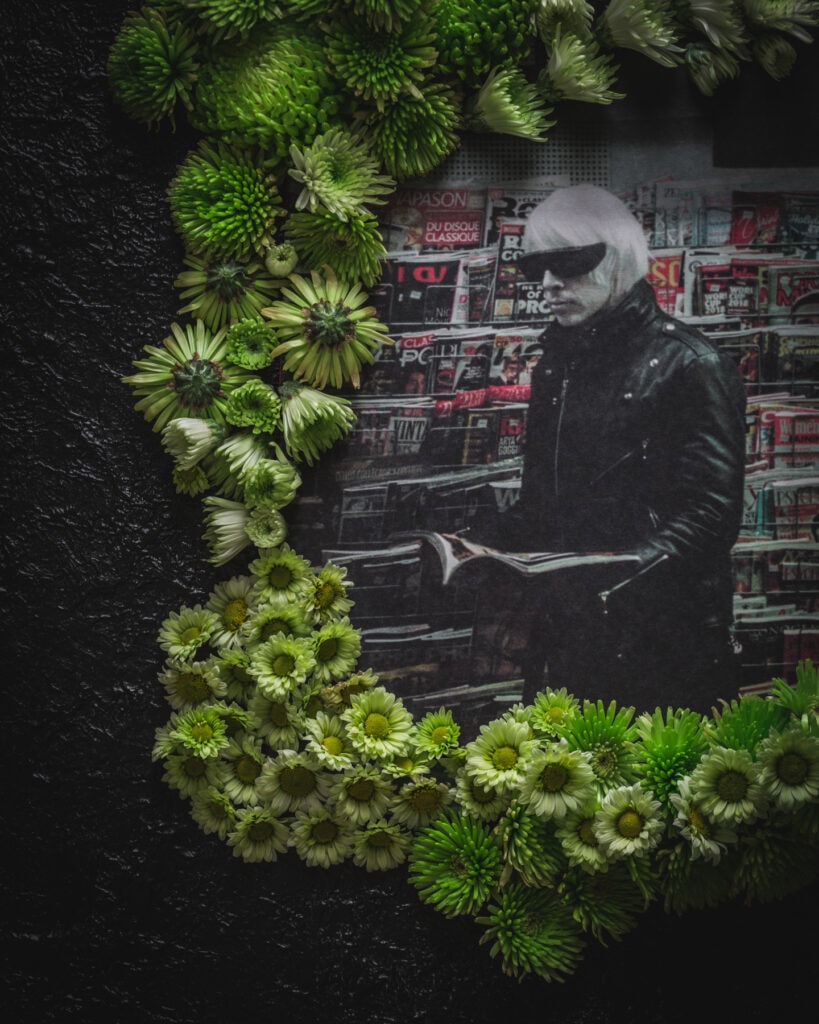
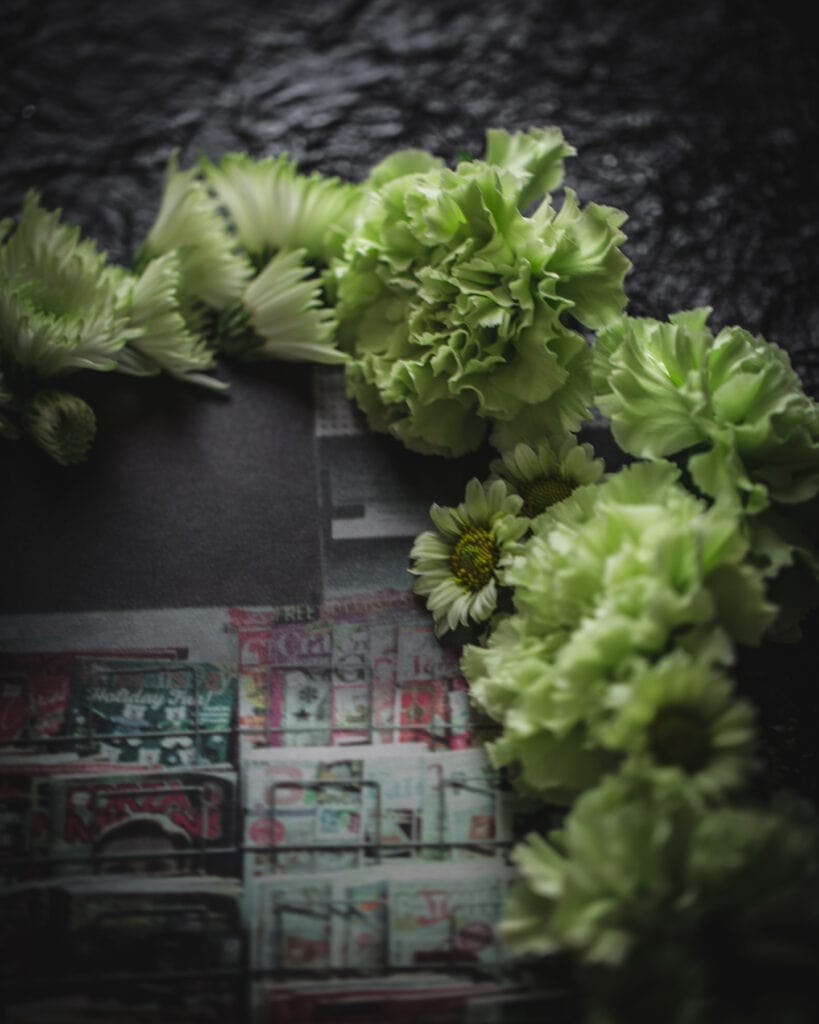
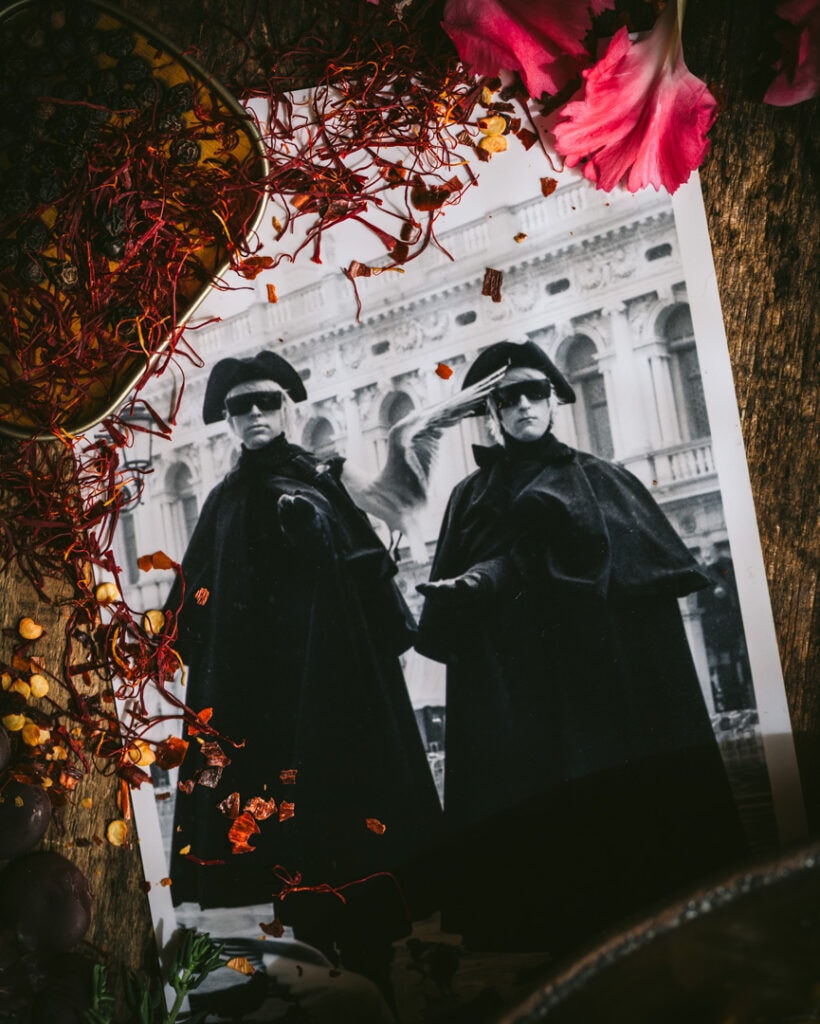
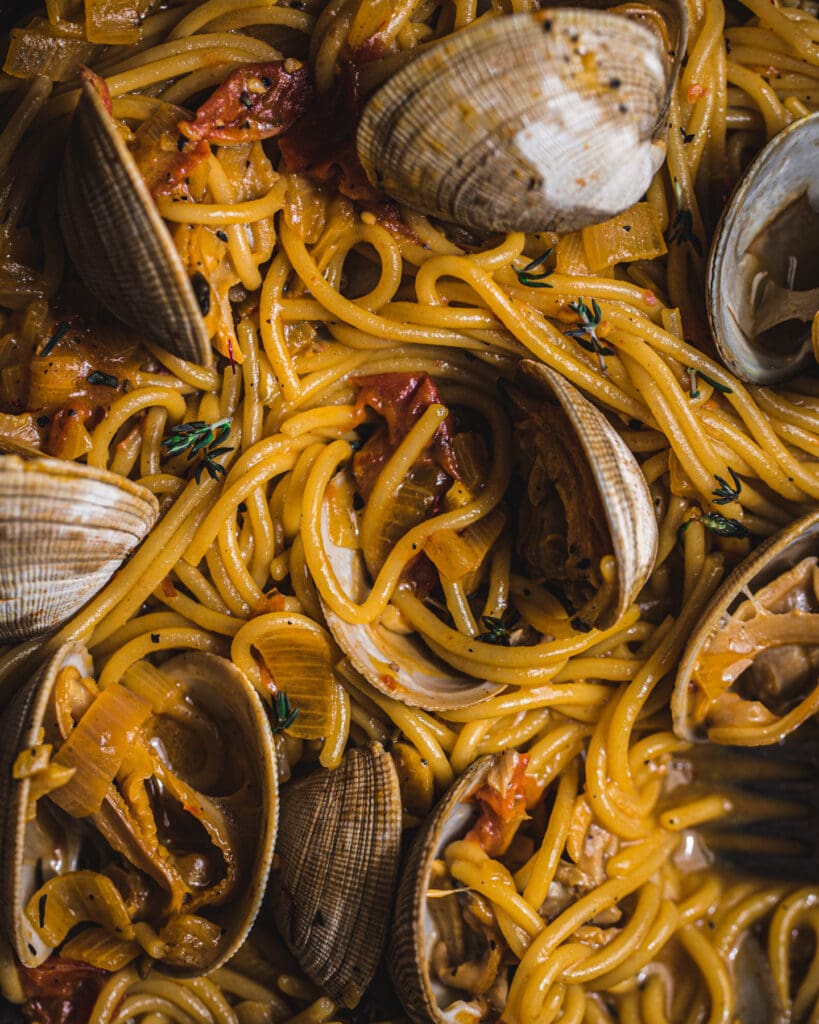
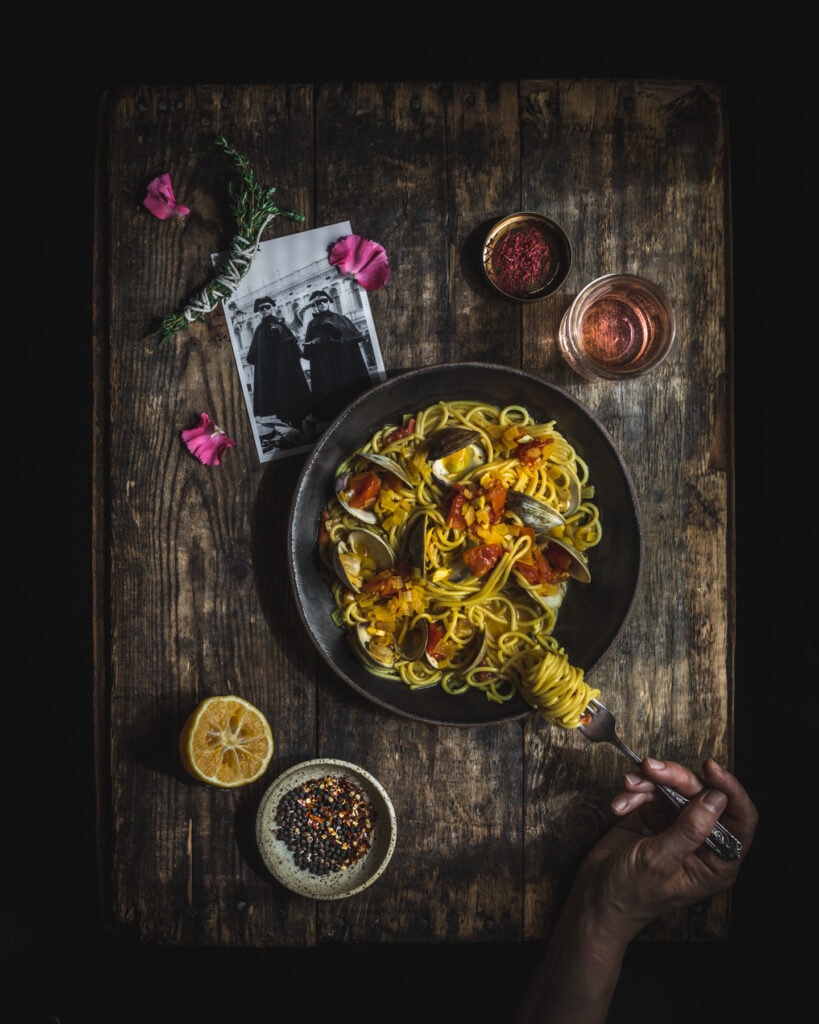
A GLUTEN-FREE VENETIAN FEAST FOR DRAB MAJESTY’S MODERN MIRROR: SPAGHETTI ALLE VONGOLE WITH LEMON, SAFFRON, THYME, AND PINKISH WINE
Modern Mirror was a reassuring friend to me during a time in which I was frightened, and Drab Majesty’s larger catalog of music continues to provide a nourishing refuge. It was only natural that I would have to return that nourishment in the form of a meal. This is my homage to Drab Majesty’s rich aesthetic world, and to the wonderful cloaked Venetian Gondolier photo series that was created in collaboration with Nedda Afsari for Modern Mirror. It is a classic Venetian dish with a gluten-free preparation because I read that Andrew Clinco, human vehicle to Deb Demure, eats gluten-free, which is convenient as I do also.
Spaghetti Alle Vongole was the first meal I had while on a short trip to Venice with a girlfriend back in 2004. I still remember our little candlelit table, set at the edge of a narrow canal, the sounds of water lapping stone and a large glass of Chianti lulling me into a blissful catatonia after a long journey by train.
This is my own twist on the dish, spiced with saffron, thyme, and lots of black pepper, in addition to the traditional ingredients of lemon, garlic, shallots, fresh tomatoes, and red chili flakes. I use pinkish wine in the broth instead of white wine – if you don’t know why, treat yourself and go listen to Drab Majesty’s “Dolls in the Dark.”
My version is made extra magical by fishing the noodles out of the pasta water early and finishing them in the clam broth. The sauce thickens as the broth melts into the noodles, which become deeply infused with flavor. I reserve a little of the clam broth to drizzle over the dish to finish, ensuring that every twirl of your fork is coated in lusciousness.
Prep time: 20 minutes
Servings: 2
INGREDIENTS
2 cloves garlic, minced
1 large shallot, finely chopped
2 tablespoons olive oil
2 tablespoons unsalted butter (use goat butter if lactose intolerant)
1/4 teaspoon chili-pepper flakes
1.5 lbs littleneck clams
½ cup pinkish wine
Generous pinch of saffron (about ¾ of a teaspoon)
Thyme bouquet garni
1 tomato, diced
6oz gluten free spaghetti (I like Jovial, not sponsored)
1 tablespoon fresh lemon juice
Ground black pepper to taste
Fresh thyme leaves for garnish
Sea salt to taste
PEPARATION
Equipment pre-game: Make sure you have 2 large pots. You’ll need one for the spaghetti and one for the clams.
Grocery store pre-game: Kindly ask your fishmonger that they only give you clams that are closed. If they’re open, they’re dead, and you don’t want to cook them. Give them a sniff and make sure they don’t smell funky.
Post-grocery store pre-game: When you get your clams home, gently place them in a bowl of cold water with a teaspoon of sea salt for at least 30 minutes. Don’t cover the bowl. Put it in the fridge until you’re ready to go. This helps to draw sand out of the clams.
Ready to cook? Fire up the stereo, turn on Modern Mirror, and have some fun. Pour yourself a big glass of that pinkish wine. This recipe is super easy and there’s nothing to worry about. The only semi-tricky thing is timing the pasta to be ready at the same time as the clams, but if you miss the mark, it’s not a big deal.
Bring 3 quarts of water and 1/2 teaspoon salt to a boil in a large pot.
While you are waiting for the water to boil, prep the ingredients for the clams. Chop the shallot and garlic. Grab a very generous handful of thyme to make your bouquet garni, and be thorough about tying it up. You don’t want anyone to choke on a runaway stem. Measure out your saffron and red pepper flakes. Squeeze your lemon and measure out the juice. Have your black pepper grinder nearby.
Once the large pot of pasta water has come to a boil, this is a signal that you can begin to prepare the clams. Grab the other large pot, and melt the butter and olive oil over medium heat.
Add the chopped shallot and garlic and cook until soft and translucent (about 3 minutes) being careful not to burn the garlic.
Add the red pepper flakes and continue cooking 15 more seconds.
Add the wine, chopped tomato, thyme bouquet garni, and saffron, crumbling the saffron with your fingers as you scatter it into the pot.
Start cooking the pasta. You will strain the pasta approximately 2 minutes before it has finished cooking so that it can finish cooking in the broth.
Carefully remove the clams that have been soaking in salt water, and gently add them to the pot with the wine and saffron. Increase the heat to high, put the lid on and cook until the clams open. This will take approximately 4-6 minutes. Start checking after 4 minutes, removing the clams as they open, and placing them in a mesh strainer set above a bowl. This will stop the calms from continuing to cook, while catching any broth they release.
Discard any clams that do not open after 8 minutes.
Once you have removed all the clams from the broth, scoop up ¼ cup of the broth to reserve for the finished dish.
Once the pasta has about 2 minutes left to cook, strain it, reserving ¼ cup of pasta water. Add the pasta, ¼ cup of pasta water, lemon juice, and the juices from the bowl that the clams have been staining over to the pot with the broth, bring it to a boil, and gently toss the pasta with tongs until it is fully coated in the broth, adding a very generous grind of black pepper as you go. Cook for about 2 minutes or until al dente, gently tossing the pasta from time to time to ensure nothing gets too sticky and all the flavors melt together.
Transfer pasta to serving bowls and top with clams. Drizzle the ¼ cup of reserved broth over the plated dish. Garnish with a few leaves of fresh thyme if you’re feeling artsy, say grace to Deb and Mona and dig in.
XOXO,
Courtney
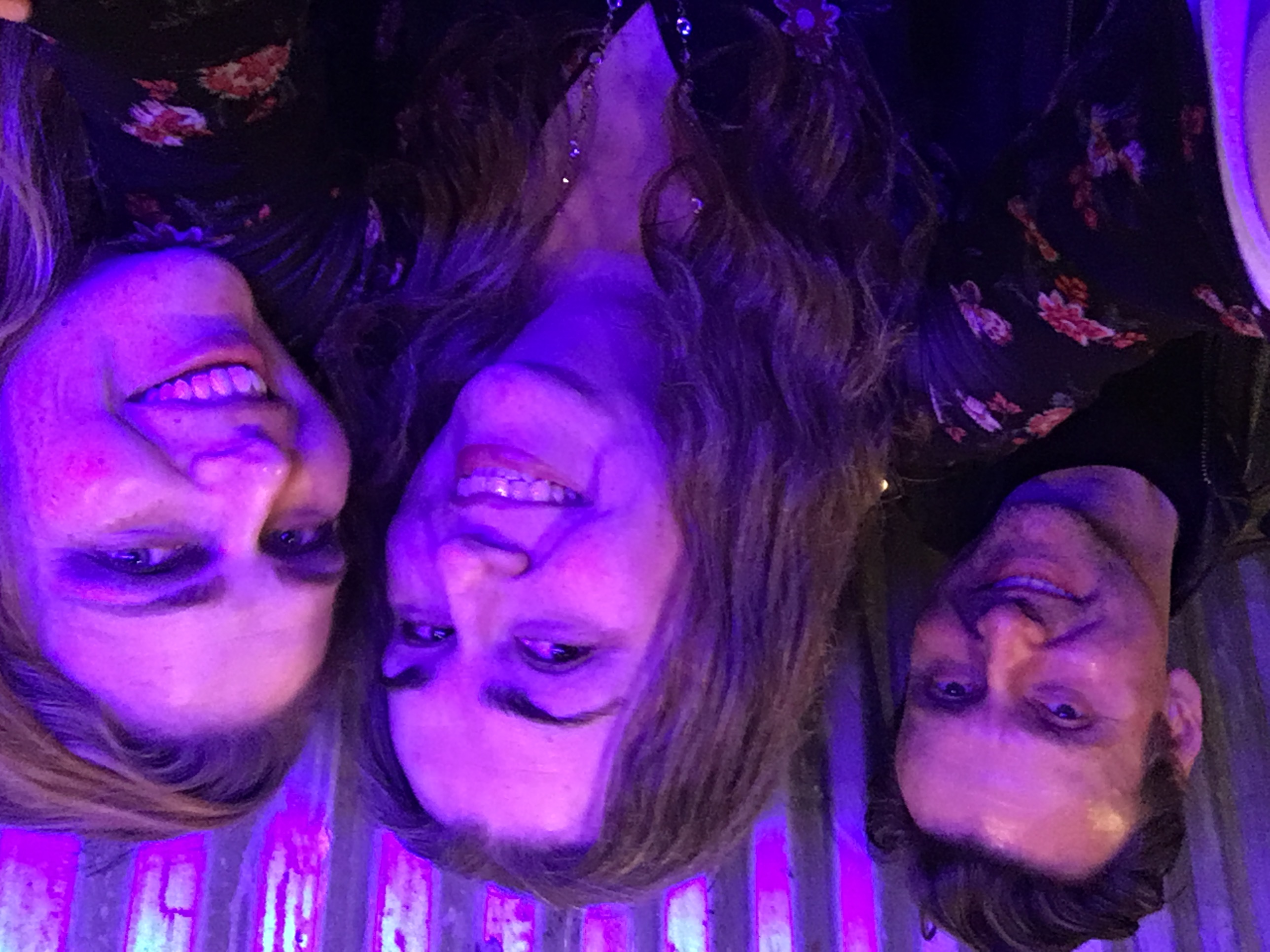
ACKNOWLEDGEMENTS
Thank you to my beautiful husband, Eric Esser, for eating this clam dish 7 times while I strove to capture the perfect shot, and for your endless guidance and inspiration as a writer.
Thank you to my beautiful sister, Katerie Whitman, for helping me to find the musical language to express what I experienced that magical night at The DNA Lounge dancing to “Oxytocin.”
Thank you to San Francisco’s DNA Lounge for having the best sound system for any goth night I’ve ever been too (and the coolest industrial warehouse atmosphere!) and thank you to the DJ that spun “Oxytocin” that fateful night back in February 2020. Donate to help to save the DNA Lounge here.
Thank you to Kristin Cofer for teaching me how to play with colored light and long exposures. Kristin is an incredible photographer and teacher, and has photographed Drab Majesty, among others. She is offering virtual portrait sessions and photography lessons during the pandemic. Check out her work here.
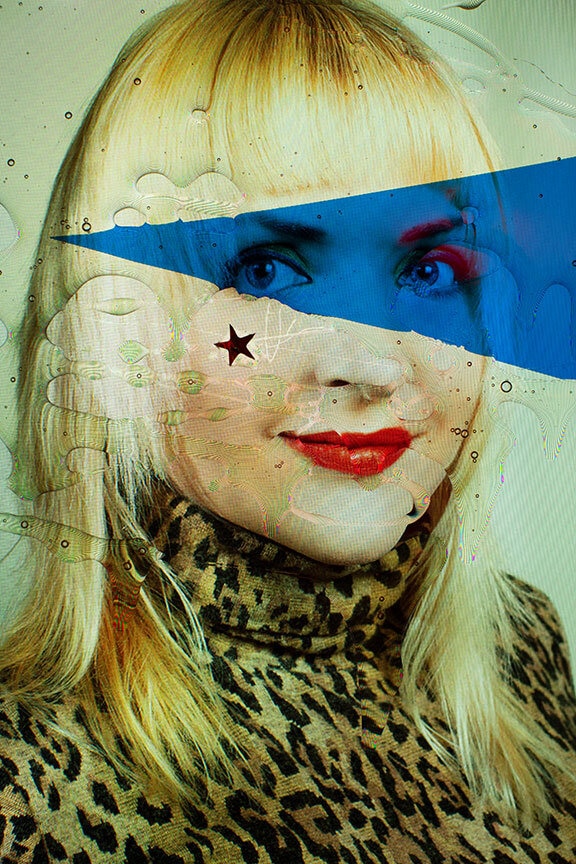


As the DJ who played “Oxytocin” that night at Death Guild, I got some serious warm & fuzzies reading your story. Thank you for the beautiful words.
Oh my goodness I just shrieked with joy reading this (#pathetic) It seems like magic that my account of that experience made its way back to you. That was one of the most potent music listening experiences of my life. Thank you for giving it to me. There’s nothing I look forward to more about post covid life than dancing at the DNA Lounge on Death Guild night again.
this resonated deeply with me.
Thank you so much for visiting and for reading, Ruth. All the love and light : )
I love your work so much. I can’t wait to see what you’ll do next.
Aww Loren, thank you, I’m so touched that you took the time to read it. I still have visions of the vinyl gloves emerging from the darkened shower in “Still Life with Shattered Glass” – I loved those characters and that world.
I’m sitting here reading this, though I should be working to meet a deadline before this day ends (for IG LOL) and I wish I had something more coherent and thoughtful to say than WOW. I feel like that every time I read your thoughts and see your art, be it the dish you’ve created or the visual concept to support your story. I hope you knew how big of an impact the stories you’ve shared over the years have made on those lucky enough to have found you online (offline too I’m sure!). I’m certain there are so many of us. And I wish I’d known the struggle you were going through as I got to know you through that devil of a platform. You managed once again to put so eloquently to words something complex and sensitive, stricking a chord, or shall I say a key on the synthesizer? <3 Thank you.
Awww Jella, you are always the cutest, “striking a key on the synthesizer?” All the x’s and oh’s to you. Thank you so much for reading my work. Your creativity, warmth, and ability to dose it to the masses are always an inspiration to me.
I read every word. I also read your instgram posts (unless I miss them through not scrolling long enough lol) because I always felt that they had substance and honesty and I resonated with a lot you said. I feel the damn same about social media and the current climate….. It’s all so fake, exhausting and toxic. Thank you for this and for sharing your art.
Karmell (the girl in chainmail and horns on Instagram)
Hi Karmell : ) Thank you so much for hoping over to my blog and giving my essay a chance. I’m glad to hear it resonated – hopefully I will inspire a few people to have a healthier relationship with social media. All the best to you, and enjoy the chainmail and horns xo
Very moving and relatable. The inspiration, the manic enthusiasm, the energy drain, despondency and then the resolve. I’m so glad you are in a better place. I enjoy your work a lot. The personal stories always have been a great accompaniment to the recipes, photography and music. Love your aesthetic, buy really the journey you’ve shared is what I value the most. I wish you so much happiness and serenity going forward. Also thank you for turning me on to Drab Majesty. 🖤
Awww Hi, Mario! Thank you so much for hoping over here and for reading, and for your thoughtful words. I enjoy our Instagram friendship. I’m honored that I was the person that introduced Drab Majesty. If you ever become a superfan the new Showtime documentary miniseries on the Heaven’s Gate UFO cult is a great DM rabbit hole to fall down . . .